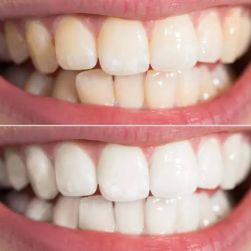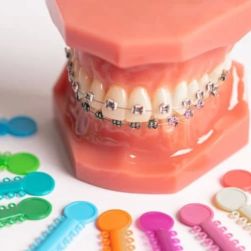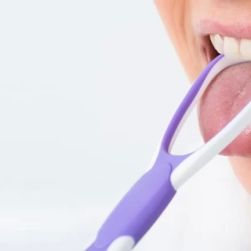Understanding Different Types of Dental Treatments for Tooth Pain
Experiencing tooth pain can be one of the most uncomfortable and distressing conditions to deal with. As someone who has been through this firsthand, I know just how unbearable it can feel when the pain strikes. Whether it’s a sharp, sudden ache or a dull, persistent throb, tooth pain can disrupt your daily life. But the good news is, there are several effective dental treatments available that can relieve the pain and address the underlying causes. In this article, I’ll walk you through some of the most common types of dental treatments for tooth pain, explaining each option in detail and sharing personal experiences to help you better understand your options.
The Importance of Identifying the Cause of Tooth Pain
Before diving into the various treatments, it’s important to understand that tooth pain can stem from different causes. From cavities to gum disease, and from cracked teeth to tooth abscesses, each issue requires a unique treatment approach. During my own dental journey, I learned that the first step in relieving pain is identifying the root cause. A thorough examination by a dentist is essential to ensure that the correct treatment plan is chosen. Some of the common causes of tooth pain include:
- Cavities: Decay in the tooth that leads to sensitivity and pain.
- Gum Disease: Infection or inflammation of the gums can cause throbbing pain in the teeth.
- Tooth Abscess: An infection that can lead to a pus-filled pocket and intense pain.
- Cracked Teeth: A cracked tooth can be sharp and painful, especially when chewing or drinking cold beverages.
Now that we have a better understanding of what might be causing the tooth pain, let’s explore some of the treatments available to manage and eliminate the discomfort.
1. Dental Fillings for Cavities
When cavities are the culprit behind tooth pain, dental fillings are a common treatment. In my case, I remember feeling that sharp, intense pain whenever I bit into something hard. It was clear that a cavity was the issue. After visiting my dentist, I learned that fillings are used to restore the tooth’s structure after decay is removed. The dentist will clean out the decayed portion of the tooth and fill it with a material such as silver amalgam or composite resin, which can help prevent further pain and infection. Fillings are relatively quick and painless and can last for many years with proper care.
2. Root Canal Therapy for Severe Pain
One of the most dreaded dental treatments, a root canal, is often necessary when the pulp inside the tooth becomes infected or inflamed. I’ve had the experience of needing a root canal, and while the thought of it can make anyone anxious, it’s a highly effective solution for eliminating deep tooth pain. During the procedure, the dentist removes the infected pulp, cleans the inside of the tooth, and then seals it with a filling. Root canals can be a bit more time-consuming compared to fillings, but they are incredibly effective in relieving pain caused by an infected tooth.
3. Dental Crowns for Damaged Teeth
If your tooth has been severely damaged or weakened by decay or trauma, your dentist might recommend a dental crown. Crowns are custom-made caps that cover the entire tooth, restoring its shape and function. When I had a cracked tooth, my dentist recommended a crown to prevent further damage and to eliminate the pain caused by the exposed nerve. Crowns are made from various materials, including porcelain, metal, or a combination of both, and they can be designed to match the color of your natural teeth. Crowns not only alleviate pain but also provide long-term protection for compromised teeth.
4. Tooth Extraction for Irreparable Damage
Sometimes, the damage to a tooth is so severe that it cannot be saved. In these cases, tooth extraction becomes necessary. I’ve had a tooth extraction due to an abscess that couldn’t be treated with a root canal. While the thought of losing a tooth can be unsettling, I learned that extractions are often the best option to prevent further infection and pain. After the extraction, my dentist discussed options for replacing the lost tooth, such as implants or bridges, to restore my smile and function. It’s worth noting that modern techniques for tooth extraction are quite advanced, making the procedure relatively comfortable.
5. Treatments for Gum Disease
Gum disease, or periodontal disease, can be a significant cause of tooth pain, especially if it progresses to a more severe stage. Symptoms of gum disease include swollen, bleeding gums and sensitivity around the teeth. In my case, I noticed that my gums were often tender and bled when I brushed my teeth. My dentist diagnosed me with gingivitis, the earliest stage of gum disease, and recommended a deep cleaning procedure called scaling and root planing. This procedure involves removing plaque and tartar from below the gumline and smoothing out the root surfaces to help the gums reattach to the teeth. For more advanced gum disease, surgery may be required to restore the health of the gums and teeth.
6. Home Remedies for Temporary Pain Relief
While it’s essential to seek professional dental care for lasting relief, there are a few home remedies that can help alleviate tooth pain temporarily. I personally found that using a cold compress on the outside of my cheek near the painful tooth helped numb the area. Rinsing with warm saltwater also provided temporary relief by reducing inflammation. Over-the-counter painkillers such as ibuprofen or acetaminophen can help manage pain until you can see a dentist. However, these remedies should only be used as a short-term solution while awaiting professional treatment.
7. Prevention is Key
Having gone through various dental treatments for tooth pain, I’ve come to realize that prevention is the best approach to avoiding future dental issues. Brushing twice a day with fluoride toothpaste, flossing regularly, and visiting the dentist for routine check-ups can help prevent many of the problems that lead to tooth pain. I also learned the importance of avoiding overly sugary foods and drinks, which can contribute to cavities and other dental issues.
In conclusion, dealing with tooth pain can be a frustrating experience, but understanding the available treatment options can help you make informed decisions. Whether it’s a simple filling, a more complex root canal, or something else, your dentist can guide you toward the most appropriate treatment. Don’t hesitate to seek professional care when you experience tooth pain, as early intervention can help prevent further complications.
If you're looking for the right clinic or dental services, check out Dentistry Toothtruth for expert recommendations on the best dental clinics, hospitals, and services that can help you manage tooth pain effectively.






